Ford Puma VS VW Touran – Specs, Efficiency & Price Comparison
Which model is the better choice – the Ford Puma or the VW Touran? We compare performance (168 HP vs 150 HP), boot capacity (523 L vs 834 L), efficiency (13.10 kWh5.40 L vs 5.30 L), and of course, the price (24800 £ vs 34700 £).
Find out now which car fits your needs better!
The Ford Puma (SUV) is powered by a Petrol MHEV or Electric engine and comes with a Manuel or Automatic transmission. In comparison, the VW Touran (MPV) features a Petrol or Diesel engine and a Manuel or Automatic gearbox.
When it comes to boot capacity, the Ford Puma offers 523 L, while the VW Touran provides 834 L – depending on what matters most to you. If you’re looking for more power, you’ll need to decide whether the 168 HP of the Ford Puma or the 150 HP of the VW Touran suits your needs better.
There are also differences in efficiency: 13.10 kWh5.40 L vs 5.30 L. In terms of price, the Ford Puma starts at 24800 £, while the VW Touran is available from 34700 £.
Compare all the key specs now and find out which model fits your lifestyle best!
Ford Puma
The Ford Puma presents itself as a stylish compact SUV with a distinctive design that combines practicality with a dynamic driving experience. Its sleek lines and sporty aesthetics make it stand out on the road, while the interior offers a comfortable and tech-savvy environment. With an emphasis on efficiency and a smooth drive, the Ford Puma is well-suited for both urban commutes and countryside adventures.
details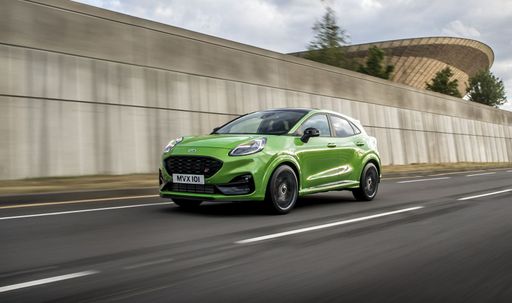 @ puma.fordpresskits.com
@ puma.fordpresskits.com
 @ puma.fordpresskits.com
@ puma.fordpresskits.com
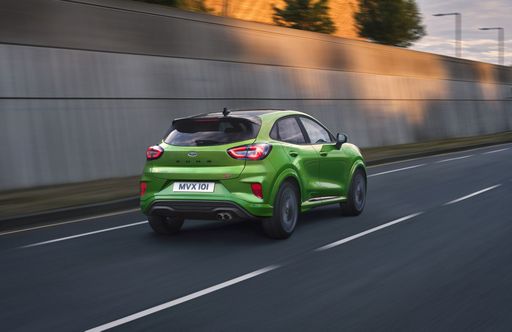 @ puma.fordpresskits.com
@ puma.fordpresskits.com
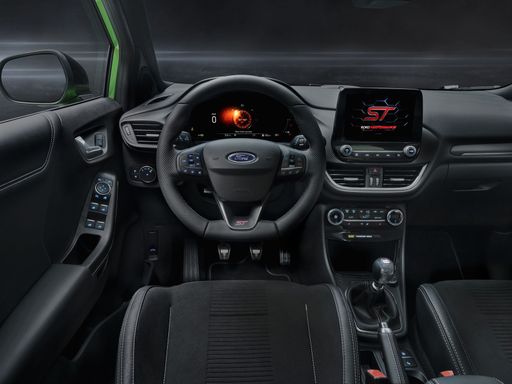 @ puma.fordpresskits.com
@ puma.fordpresskits.com
VW Touran
The VW Touran stands out as a versatile and reliable choice for family transportation. Its spacious interior and cleverly designed seating arrangements offer exceptional comfort and practicality for both short trips and long journeys. With a focus on safety and an array of advanced features, the Touran delivers a driving experience that combines convenience with peace of mind.
details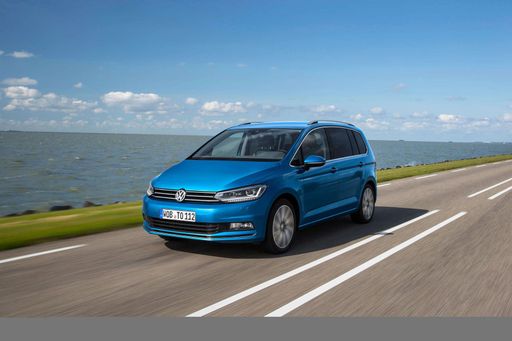 @ volkswagen-newsroom.com
@ volkswagen-newsroom.com
 @ volkswagen-newsroom.com
@ volkswagen-newsroom.com
 @ volkswagen-newsroom.com
@ volkswagen-newsroom.com
 @ volkswagen-newsroom.com
@ volkswagen-newsroom.com
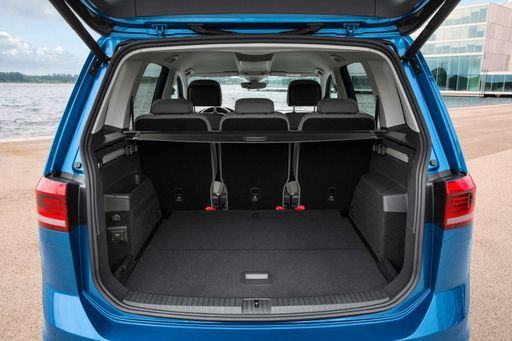 @ volkswagen-newsroom.com
@ volkswagen-newsroom.com

|

|
|
|
|
Costs and Consumption |
|
|---|---|
|
Price
24800 - 36300 £
|
Price
34700 - 43900 £
|
|
Consumption L/100km
5.4 - 6 L
|
Consumption L/100km
5.3 - 6.6 L
|
|
Consumption kWh/100km
13.1 - 13.7 kWh
|
Consumption kWh/100km
-
|
|
Electric Range
364 - 376 km
|
Electric Range
-
|
|
Battery Capacity
43 kWh
|
Battery Capacity
-
|
|
co2
0 - 136 g/km
|
co2
140 - 150 g/km
|
|
Fuel tank capacity
42 L
|
Fuel tank capacity
58 L
|
Dimensions and Body |
|
|---|---|
|
Body Type
SUV
|
Body Type
MPV
|
|
Seats
5
|
Seats
5
|
|
Doors
5
|
Doors
5
|
|
Curb weight
1316 - 1563 kg
|
Curb weight
1520 - 1631 kg
|
|
Trunk capacity
456 - 523 L
|
Trunk capacity
834 L
|
|
Length
4186 - 4226 mm
|
Length
4527 mm
|
|
Width
1805 mm
|
Width
1829 mm
|
|
Height
1550 - 1555 mm
|
Height
1668 mm
|
|
Payload
367 - 469 kg
|
Payload
590 - 601 kg
|
Engine and Performance |
|
|---|---|
|
Engine Type
Petrol MHEV, Electric
|
Engine Type
Petrol, Diesel
|
|
Transmission
Manuel, Automatic
|
Transmission
Manuel, Automatic
|
|
Transmission Detail
Schaltgetriebe, Automat. Schaltgetriebe (Doppelkupplung)
|
Transmission Detail
Schaltgetriebe, Automat. Schaltgetriebe (Doppelkupplung)
|
|
Drive Type
Front-Wheel Drive
|
Drive Type
Front-Wheel Drive
|
|
Power HP
125 - 168 HP
|
Power HP
122 - 150 HP
|
|
Acceleration 0-100km/h
7.4 - 9.8 s
|
Acceleration 0-100km/h
8.9 - 10.8 s
|
|
Max Speed
160 - 210 km/h
|
Max Speed
195 - 209 km/h
|
|
Torque
170 - 290 Nm
|
Torque
250 - 360 Nm
|
|
Number of Cylinders
3
|
Number of Cylinders
4
|
|
Power kW
92 - 124 kW
|
Power kW
90 - 110 kW
|
|
Engine capacity
999 cm3
|
Engine capacity
1498 - 1968 cm3
|
General |
|
|---|---|
|
Model Year
2024 - 2025
|
Model Year
2024
|
|
CO2 Efficiency Class
D, E, A
|
CO2 Efficiency Class
E
|
|
Brand
Ford
|
Brand
VW
|
Ford Puma
A Glimpse into the Ford Puma: Fusing Style with Innovation
The Ford Puma stands as a testament to modern engineering fused with style. This compact SUV is not just about aesthetics but brings to the table an array of technical innovations, topped with the reliability and performance Ford is known for. Let's delve into the technical specifics and innovative features that make the Ford Puma a stellar choice for any car enthusiast.
Powertrains and Performance
The Ford Puma is offered with a range of powertrains designed to deliver optimal performance whilst minimising fuel consumption. At the heart of this compact SUV is the 1.0 EcoBoost Hybrid engine, available in both 125 PS and 155 PS variants. This engine is a marvel of engineering, optimised to deliver power efficiently with a remarkable fuel consumption ranging from 5.4 to 5.7 L/100km for manual versions, and slightly higher for the automated variants.
The top-end 1.5 EcoBoost ST variant takes performance up a notch, providing a robust 200 PS that propels the Puma from 0 to 100 km/h in just 6.7 seconds. This variant is perfect for those who prioritise performance and exhilaration in their driving experience.
Mild-Hybrid Technology
The Puma's mild-hybrid technology plays a significant role in enhancing fuel efficiency and reducing emissions. By utilising a belt-driven integrated starter/generator, the Puma recovers energy usually lost during braking, storing it in a 48-volt lithium-ion battery. This stored energy is then used to assist the engine, providing a boost during acceleration and smoothing out the stop-start technology, ultimately leading to enhanced fuel efficiency.
Design and Comfort
The Ford Puma does not compromise on style and comfort with its ergonomic and stylish design. The SUV is available in multiple trims including the ST-Line, Titanium, and the luxurious Vignale editions, each offering unique aesthetic and technological enhancements. These trim levels provide varied offerings in terms of both exterior styling and interior comfort, ensuring there's a Puma that meets every personal preference.
Inside, the Puma offers a driver-focused cockpit with advanced technological integrations such as the SYNC 3 infotainment system, providing seamless connectivity and intuitive control of the vehicle's numerous technological features.
Safety and Technology
Safety remains paramount, and the Ford Puma is equipped with the latest security and technology features. It boasts the Ford Co-Pilot360 suite which includes adaptive cruise control, pre-collision assist with autonomous emergency braking, and lane-keeping assist, enabling a safer driving experience on both city roads and highways.
Versatility and Practicality
Beyond performance and safety, the Ford Puma shines in its versatility. With a boot capacity of 456 litres, it offers ample space for all sorts of adventures, whether you're heading on a family trip or loading sports equipment. Its innovative MegaBox is an extra storage solution, providing additional space below the boot floor.
The Puma's agile handling, paired with its compact dimensions—spanning a length of 4186 to 4266 mm and a width of 1805 mm—makes it an ideal choice for urban commuting and beyond.
Conclusion
In conclusion, the Ford Puma beautifully blends practical features with cutting-edge technology, offering a package that appeals to both the tech-savvy driver and those seeking comfort and reliability. Its range of innovative features, powerful yet efficient engine options, and a design that is both functional and stylish make it a frontrunner in the compact SUV market.
Whether you're drawn by the efficient mild-hybrid engines or the robust performance of the ST variant, the Ford Puma represents a modern driving experience where innovation meets everyday usability.
VW Touran
Discovering the VW Touran: A Versatile Family Van
The VW Touran is a compelling choice in the realm of family vehicles, boasting a combination of practicality, performance, and innovative features. As a van, it offers ample space and comfort while being equipped with modern technology to ensure a superior driving experience. Let's delve into its technical aspects and noteworthy innovations.
Engine Options and Performance
The VW Touran presents an impressive array of engine choices, catering to varied preferences. It is available in both petrol and diesel variants, with power outputs ranging from 122 to 150 PS. With a turbocharged 1.5-litre petrol engine, it efficiently combines power and fuel economy. Meanwhile, the diesel version, with a 2.0-litre TDI engine, promises commendable torque and fuel efficiency of up to 5.1 L/100km.
Designed to cater to different driving preferences, the Touran comes with either a manual or automatic gearbox. The automatic versions feature a highly responsive double-clutch system, enhancing the overall driving dynamics. Whether you prefer a lively drive through urban areas or a smooth cruising on highways, the Touran delivers a balanced experience.
Technical Specifications: Space and Practicality
Embodying the attributes of a perfect family van, the VW Touran offers generous interior space with seating for five and a versatile boot capacity of 834 litres. Its impressive dimensions, with a length of 4527 mm, a width of 1829 mm, and a height of 1668 mm, provide a spacious and comfortable cabin. The vehicle's practical features include a maximum payload capacity of up to 601 kg, making it ideal for family trips or transporting bulky items.
Moreover, the Touran's 58-litre fuel tank ensures fewer stops for fuel, enhancing long-distance travel convenience. With CO2 emissions between 133 to 147 g/km, it balances performance with environmental considerations. These attributes make it an ideal choice for families seeking both functionality and eco-friendliness.
Advanced Technology and Safety Features
Safety and innovation are at the heart of the VW Touran's design. It comes equipped with a variety of driver-assistance systems, including adaptive cruise control, lane assist, and park assist, which significantly enhance driving ease and safety. The infotainment system is no less impressive, offering seamless smartphone integration, navigation, and connectivity features.
The Touran also features VW's signature post-collision braking system, which mitigates the risk of secondary collisions. Combined with a robust and stable build, these features provide peace of mind to drivers and passengers alike.
Conclusion: The Ideal Family Companion
The VW Touran stands out in the competitive van segment with its blend of practicality, efficiency, and state-of-the-art technology. Whether you're embarking on a family adventure or navigating everyday commutes, the Touran is designed to meet the demands of modern living with ease. With its range of engine options, sophisticated features, and unwavering commitment to safety, it represents a solid investment for families seeking a reliable and versatile vehicle.
The prices and data displayed are estimates based on German list prices and may vary by country. This information is not legally binding.
